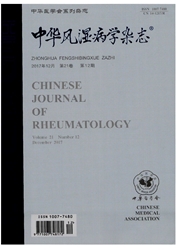

 中文摘要:
中文摘要:
目的应用基因芯片技术对狼疮肾炎(LN)患者肾组织基因的表达进行分析,进一步探讨LN的发病机制。方法15例LN患者B超定位下肾活检,抽取肾组织RNA,经过mRNA线性扩增、芯片杂交、扫描信号值。采用Rank invariant方法标化,Cluster 3.0软件聚类分析,Crsd软件进行t检验。结果Toll样受体、干扰素(IFN)-α通路、JAK/STAT信号通路相关基因在弥漫增生型LN,活动指数≥7分和慢性指数〉4分以及系统性红斑狼疮疾病活动指数(SLEDAI)〉10分的患者中高表达。结论LN存在Toll样受体-IFN-α-JAK/STAT的异常表达,随着肾脏病理活动指数、慢性指数和SLEDAI积分的增加而趋于明显。针对该通路上的关键分子、下游基因产物、作用靶细胞等可能作为将来临床筛选药物的靶点。
 英文摘要:
英文摘要:
Objective To screen for the revelant genes, draw the outline of pathogenesis pathway and elucidate pathogenesis mechanism of lupus nephritis. Methods Total RNAs were obtained from the kidney tissues of 15 patients with lupus nephritis and 8 normal controls and hybridized with microarray chips. The genes expression profiles were analysed. Results The genes of Toll-like receptors (TLR), type Ⅰ interferon, Jak/Stat pathway and some chemokines were significantly over-expressed in patients with proliferative glomerulonephritis (WHO Class Ⅳ ), the activity index (AI)〉7, the chronicity index 〉4 and SLEDAI〉10. Conclusion The TLR-IFN-α-JAK/STAT pathway participates in pathogenic process of lupus nephritis. Further study of the pathway can possibly find specific targets for the treatment of systemic lupus erythematosus (SLE) or lupus nephritis.
 同期刊论文项目
同期刊论文项目
 同项目期刊论文
同项目期刊论文
 期刊信息
期刊信息
